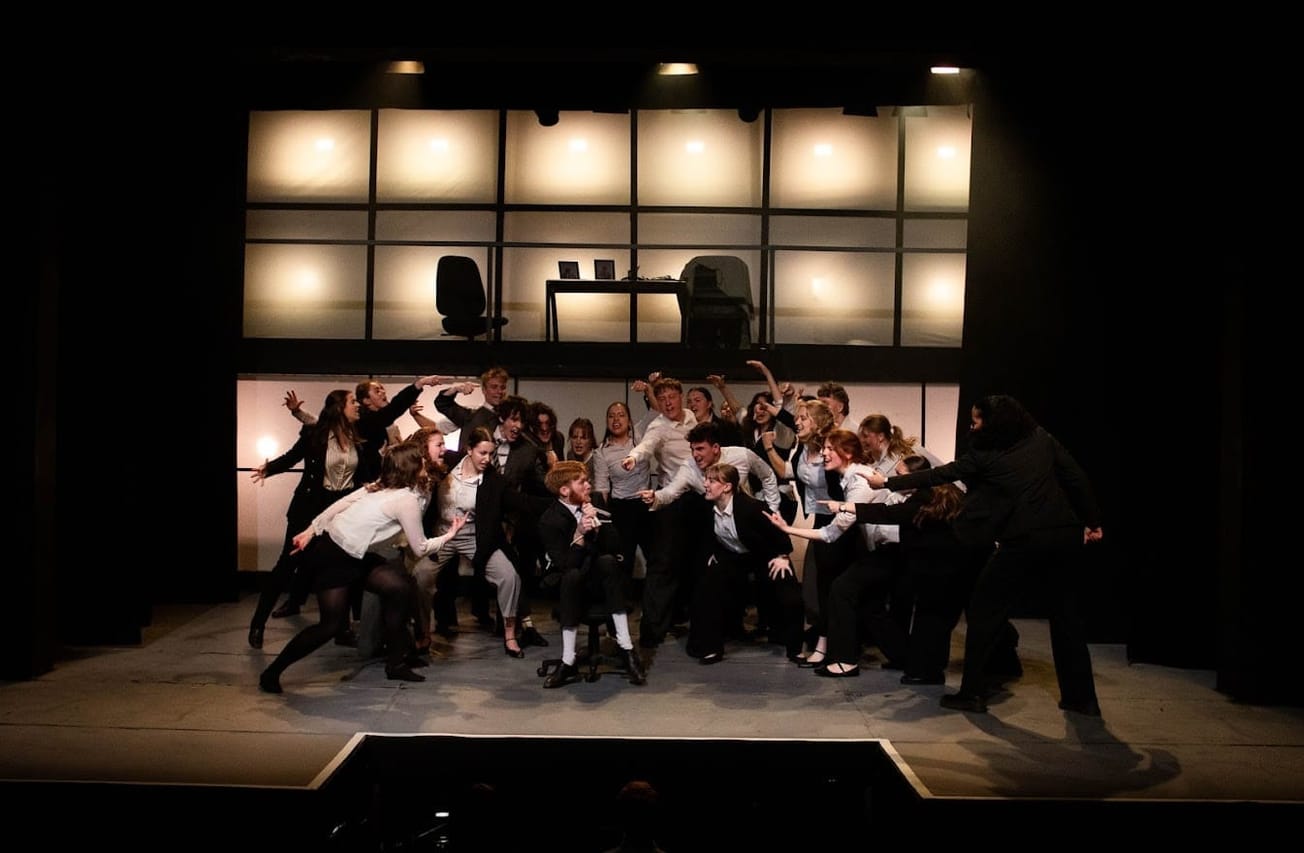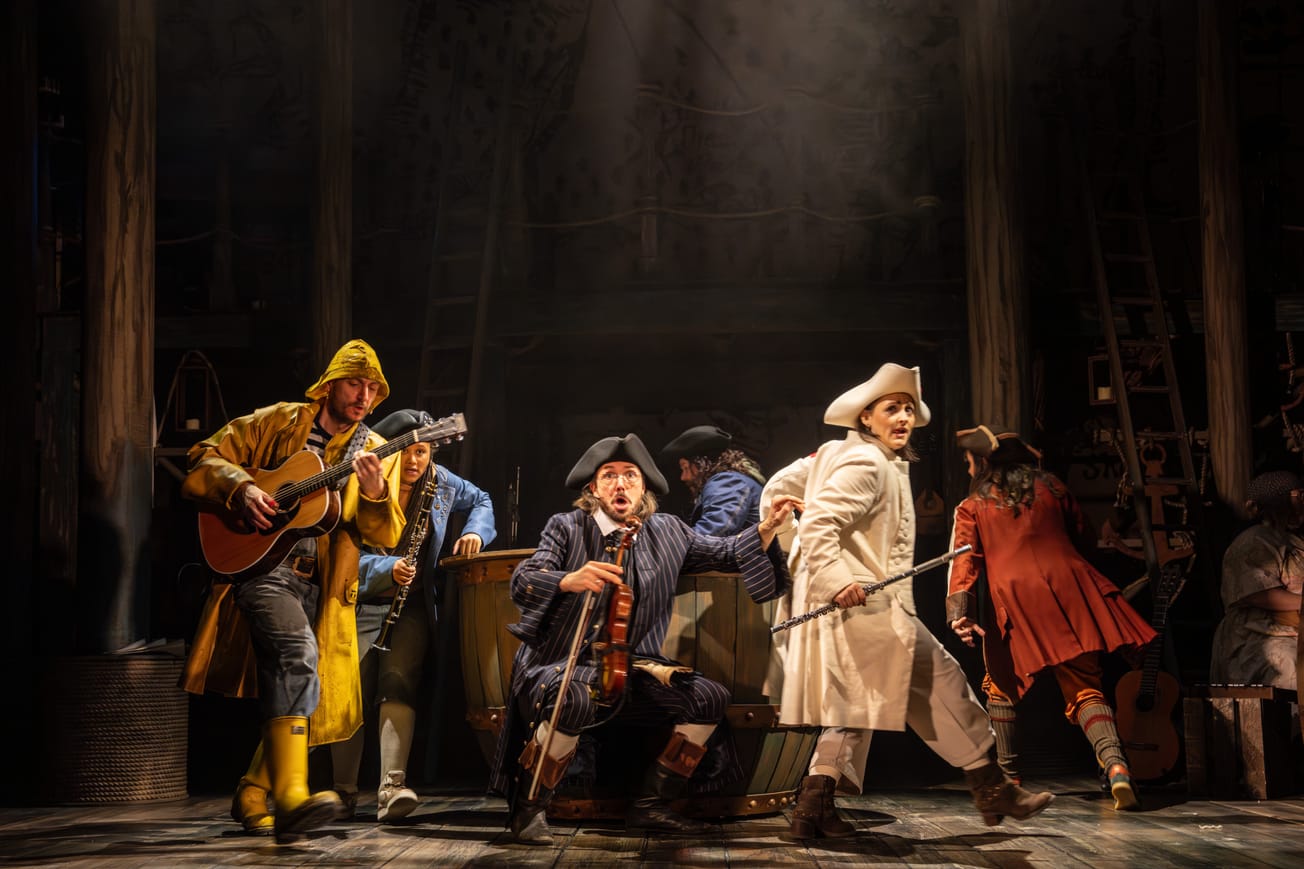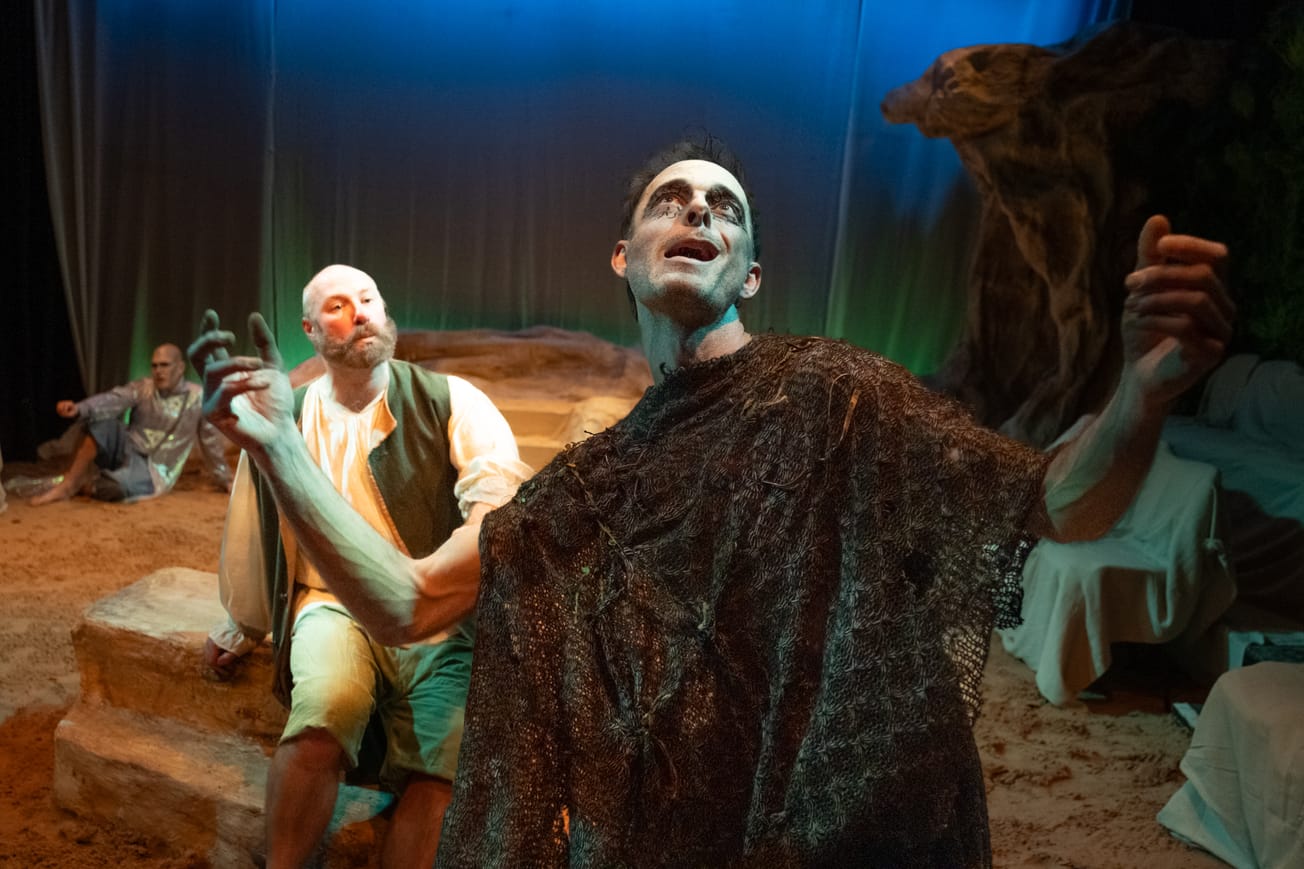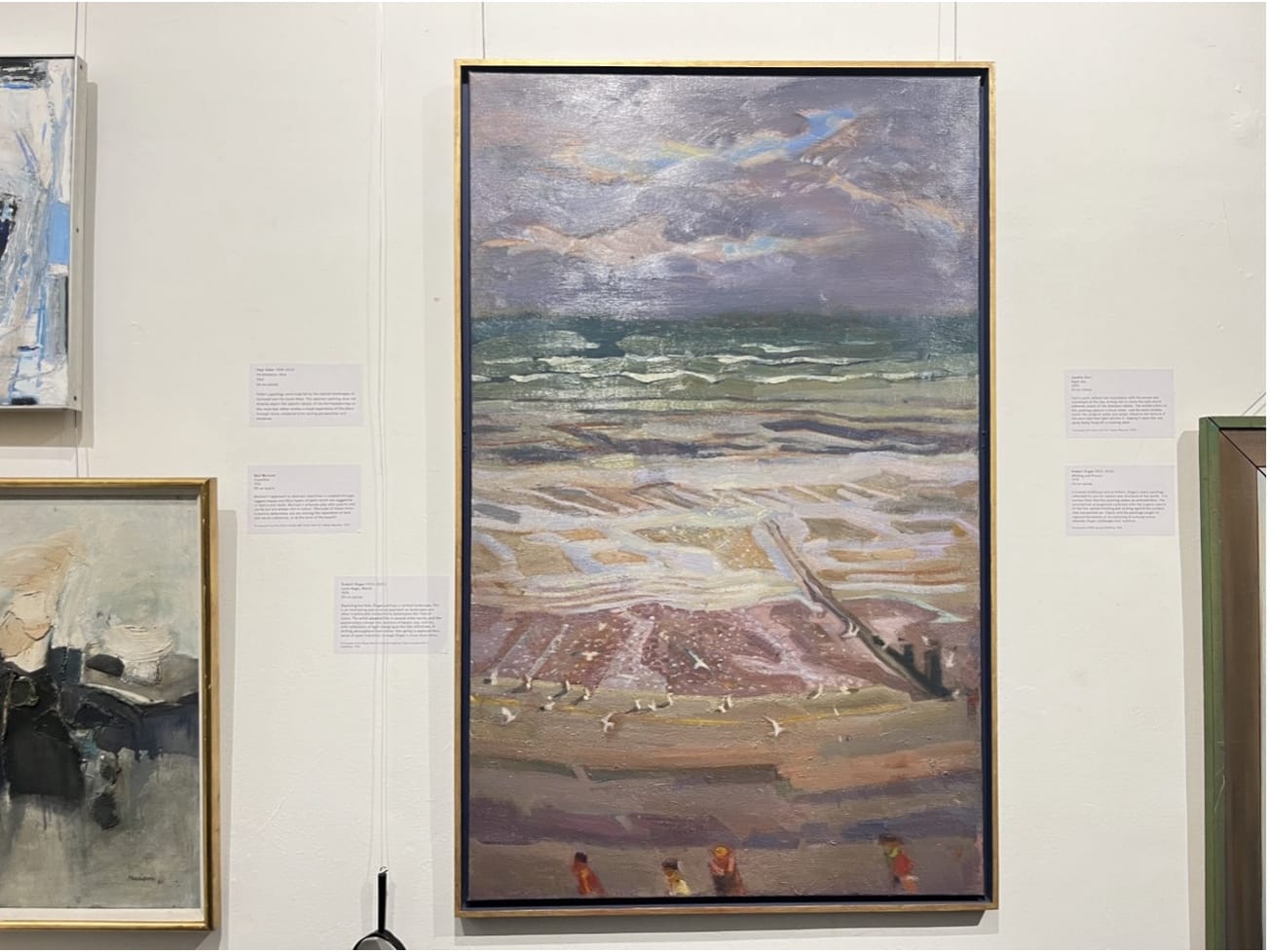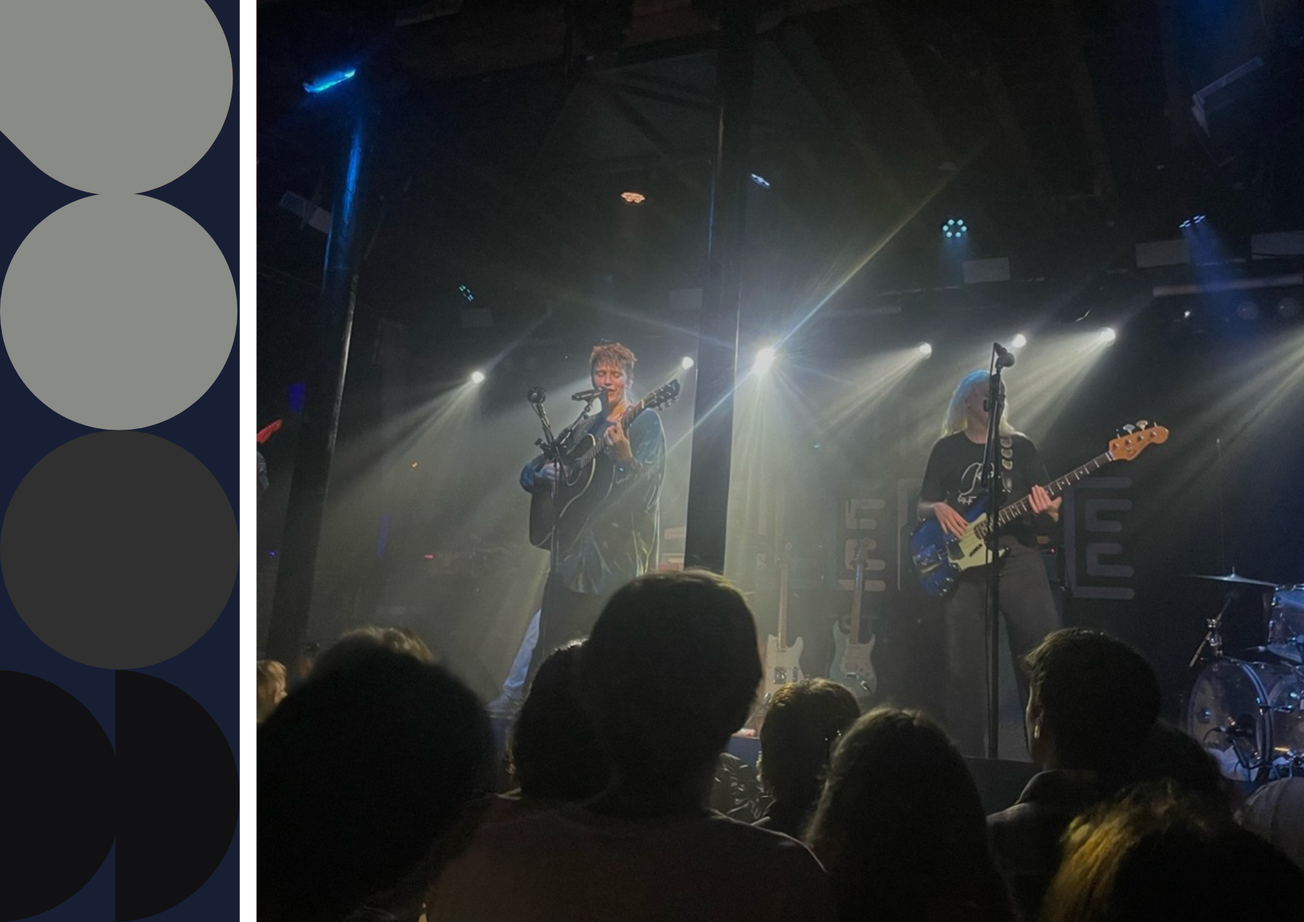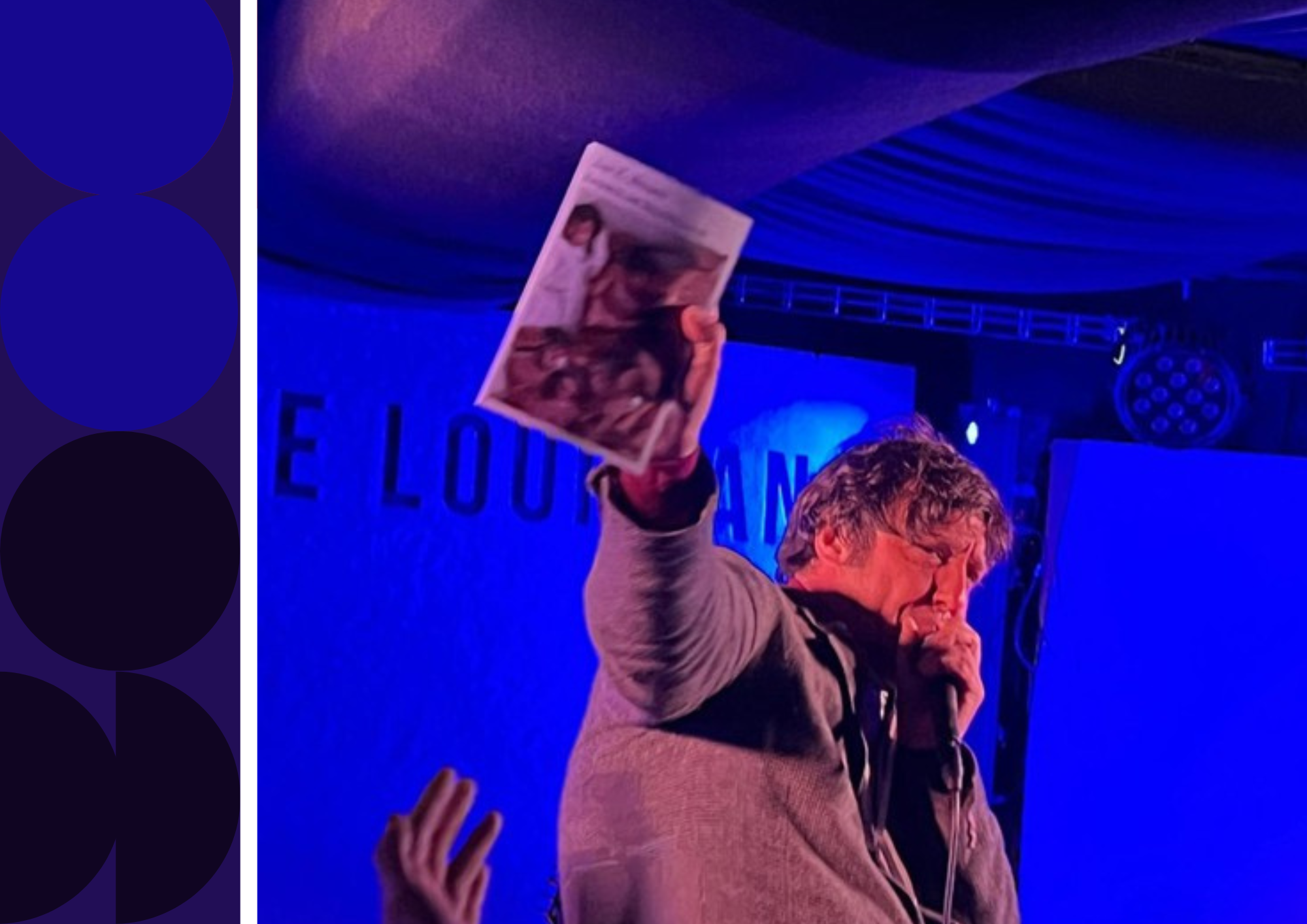On Monday, two days before the opening night of 9 to 5: the musical, I went to the Winston Theatre for the first time. I was interviewing cast and crew members in the back row of seats, half the time in darkness as lights were tested, the other half unable to avert my gaze from the visual cacophony in front of me: a scissor lift carrying a student up and down like a fairground ride, cast members practising dance moves, set pieces being moved and fixed. My recordings are filled with trumpeters practising quick scales, tuning, unexplained beeping, shouting, singing. There is, in this theatre, the overwhelming sense of creative forces joining, of something big about to happen.
I have to admit, with some shame, that I have never seen a musical at the university, and also that I didn’t have high expectations for this. ‘Student musical’ wasn’t a phrase that piqued my interest. And yet, talking to these students, largely in their final year, I was almost convinced to join MTB myself.
While I was struggling to put in my daily shift at the ASS, they were doing the same, and then carrying on till midnight in the Richmond building. Eli, the set designer and lead carpenter, was making sliding doors and tables in the workshop on the side of a final year in maths and physics. Phaedra, the marketing director, is a medical student. I’d recommend a chat with the cast and crew if you ever need humbling.
The musical tells the story of three women, Judy, Violet and Doralee, who, fed up with working for a ‘sexist, egotistical, lying, hypocritical bigot’, kidnap him and tie him up in his home, in the meantime creating radical change in the office, including day-care services, an alcoholic rehabilitation programme and a job-sharing scheme.
Issy Davy, the director, tells me how proud she is of the show, how well the team worked together. Her vision brings a new edge to the musical – which is originally set in the 1980s, adorned with its typical kitschy accoutrements – as she wants it to feel ‘timeless’ to remind the audience that workplace inequality is still alive and thriving: ‘I think it would have done those themes a disservice by placing it in the eighties’.
Issy and Modge Tait, the producer, put a clear emphasis on equality, accessibility and inclusivity, in line with the play’s values: the team set up a fundraiser for Bristol Women’s Voice, the programmes include donation QR codes, and the Saturday matinee will include a BSL interpreter.
I went to see the play on its opening night. I was invested now, having had a glimpse of the work that went into it. Hushed chatter faded out as lights went down and the first recognisable bom-bom-boms of Dolly Parton's 9 to 5 filled the theatre. An army of pyjama-clad students entered the stage and began the titular first number, led by the incredibly talented 17-piece band in the pit.
Despite the energy brought by the cast, the play's first act can only be described as dreary. The UK Office is brought to mind by the complete lack of colour in lights, set pieces and costumes. The exception to this is the revenge scenes, which inject the performance with some much-needed campness.

In the second act this changes drastically as colour begins to permeate the performance, a choice made by the director to show the potential for joy in a workplace where everyone has a voice. The square panels of light in the back are a welcome point of interest for the eye, as is the raised stage that forms Mr Hart’s office, which features framed photos of himself in what seems to be a callback to the IT Crowd’s Denholm.

The director's timeless vision is in moments undermined by the script - references to carbon paper and gags about answering machines place the play firmly in the 20th century - but these are minor quirks overridden by the sheer talent of the cast.
The lead actors delivered outstanding performances despite some technical difficulties. Jasmine Sakpoba’s Violet was powerful and endearing, Izzy Long’s love-ridden portrayal of Roz was both comedic and heartbreaking, with similarly exceptional vocals, and Faz Henderson perfectly captured Dolly Parton’s Southern charm. Evie Clark as Judy was particularly powerful in ‘Get Out and Stay Out’, a number of pure female rage translated into glass-shattering vocals.
It was a wonderful interpretation of a somewhat clunkily written musical: the cast and crew truly managed to capture the raw emotion and the important message at its heart.
Tickets are still available for performances until Saturday 1st February, so I recommend you buy yours now, as this play isn't worth missing.

